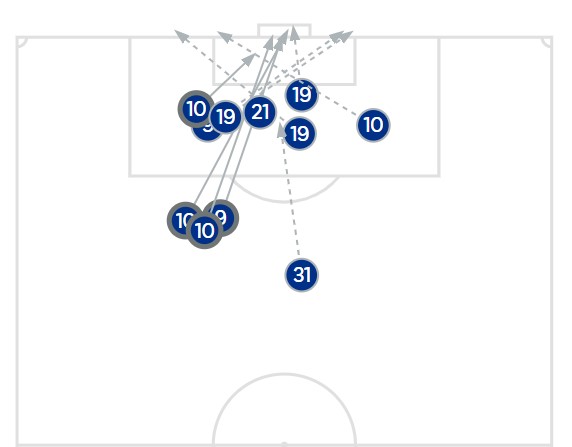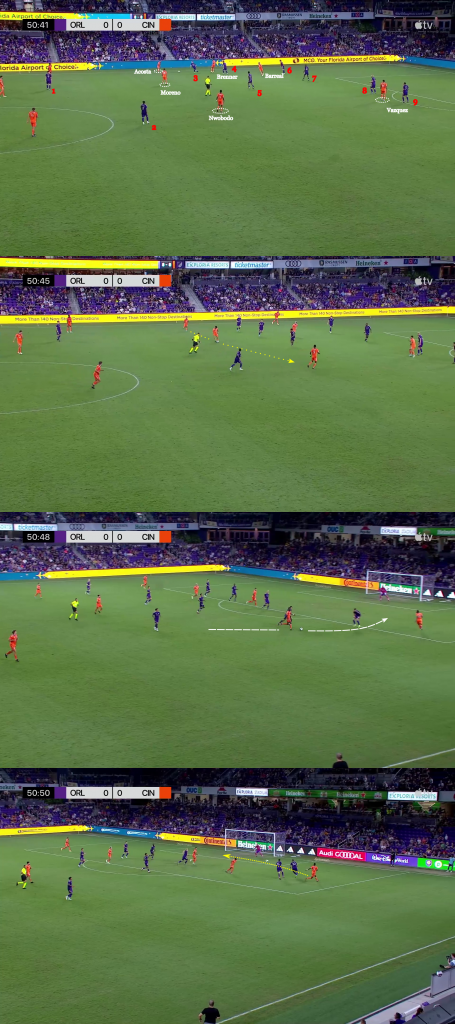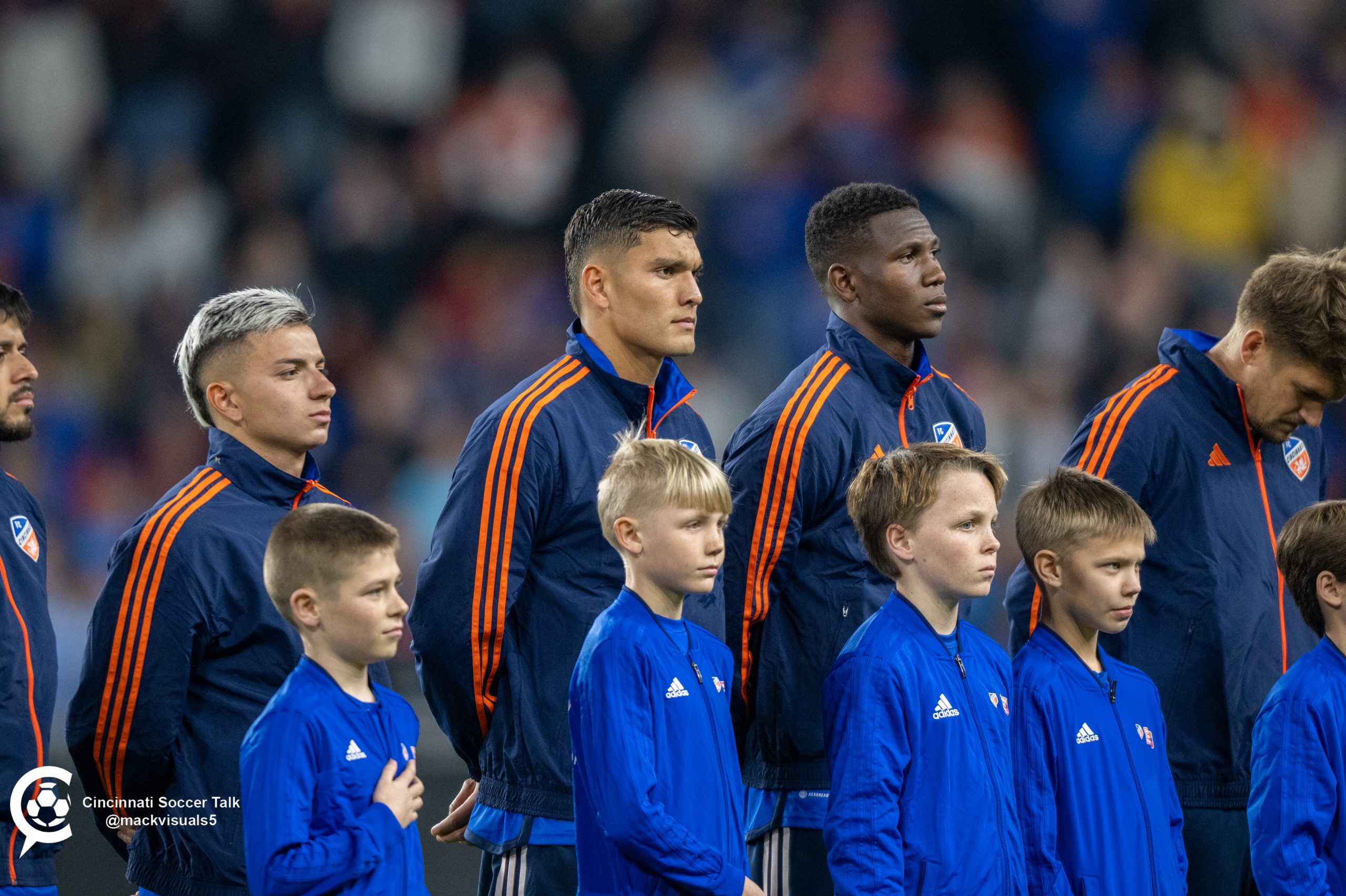At first glance, FC Cincinnati’s 0-0 draw on the road against Orlando City SC might seem like a missed opportunity. After all, the Orange and Blue largely controlled the game, creating the best chances going forward while limiting Orlando to little offensively. It just happened to be one of those games where none of those chances turned into a goal.
“Really, really pleased with our group’s performance tonight. We know Orlando’s a tough team,” Pat Noonan, FCC manager, said following the match. “I know they had to rotate some bodies, but you know, they still have some good players that were on the field tonight.”
Oscar Pareja’s decision to rotate some of his squad with this week’s trip to Mexico to face Tigres in the CONCACAF Champions League didn’t mean that the Orange and Blue faced a ‘B’ team for the full 90 minutes.
Pareja opted to start three center backs and set Orlando’s defensive line of confrontation deep in its own half, inviting the Orange and Blue to break down a set defensive unit. FCC’s 57 percent possession on Saturday was the fourth-highest of the Noonan era.
“So despite playing against a team that defends well, we had some really good looks with guys that I think are accustomed to finishing those,” Noonan said.

And judging by the shot map and the expected goals number, Noonan is right to be pleased.
Even with Orlando’s intention to sit deep and defend, FCC found opportunities to attack in transition by forcing turnovers high up the field or through direct play. This also combined with FCC’s defensive effort, where the side limited Orlando to just seven shots, one on target, and 0.3 xG.
Playing In Possession
In possession, FCC looked for ways to break down Orlando’s defensive block rather than resorting to (too many) long-distance efforts or hopeful crosses.
“I thought our improvement with the ball was significant and it allowed us to move the ball for long stretches to be able to find different ways of trying to go to goal,” Noonan said after the match.
A key element of the plan in possession fell to FCC’s center backs.
With Orlando inviting pressure, Cincinnati’s three center backs had more time and opportunities with the ball than might usually be expected. Both Nick Hagglund and Yerson Mosquera pushed higher up the field in possession and provided ball progression into the final third.
Hagglund’s passing deserves a special highlight. His 11 passes into the final third led the team on Saturday, topping Acosta’s eight. If an opponent is going to sit deep, FCC is going to have to figure out how to break them down. And that might mean more from center-backs in advanced positions.

 FCC looked promising during sustained possession in the final third at times, too.
FCC looked promising during sustained possession in the final third at times, too.
Brandon Vazquez’s effort off the crossbar in the 51st minute provides a good example of FCC attacking Orlando’s set defensive shape. The sequence begins with Orlando trying to pin FCC on the left sideline. Brenner passes back to Acosta but the defender isn’t fast enough to close him down, allowing Lucho to find Junior Moreno in the middle of the field. Notice the nine Orlando defenders in the first frame.
Moreno lets the ball roll into space before hitting an easy pass to Obinna Nwobodo. Two of Orlando’s center backs are occupied by Vazquez when Nwobodo receives the ball, so he can push the ball forward on the dribble toward Orlando’s goal. Ray Gaddis occupies the left back but makes his run too early, straying into an offside position.
Still, Nwobodo bends his run wide, getting into a position to hit a low cross towards Vazquez, who, in a move we saw a lot last year, got goal-side of his marker. Unfortunately for the Orange and Blue, Vazquez’s first-touch effort hit the crossbar.
FCC tilted the field, forcing Orlando defenders to worry about three dangerous attackers in a small space, then switched play and got a shot eight yards from goal from one of the best strikers in MLS. The result was not what the Orange and Blue would have hoped for but it’s hard to argue with the process. If FCC can continue to refine its approach in possession in the final third, the offense might really take off, even compared to last year’s version. The gravity that an overloaded left side of the field featuring Acosta and Barreal isn’t going away.
Is It Time To Be Concerned About The Front Three?
No.
FCC’s attacking trio of Vazquez, Brenner, and Acosta are all getting into good positions to score goals so far in 2023. They’re going to be fine.












